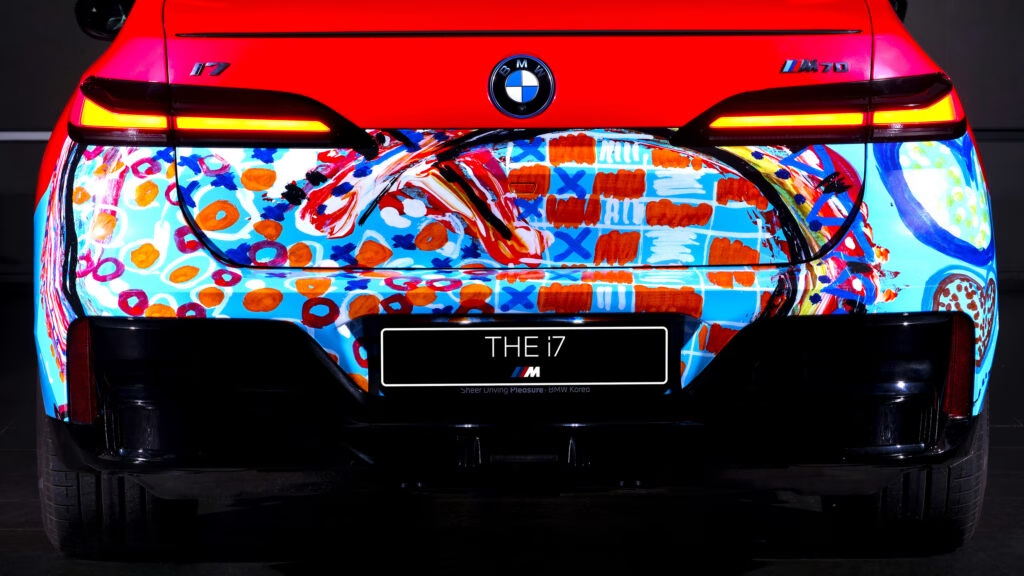Why Did BMW Turn the i7 Into a Rolling Canvas in Korea?
When you think of a BMW i7, you probably picture a sleek, high-tech luxury sedan—maybe not a riot of color and abstract shapes. But that’s exactly what’s rolling through the streets of Seoul right now. BMW Korea teamed up with pioneering artist Lee Kun-Yong to transform the i7 M Package into a one-of-a-kind art car, and the result is turning heads for all the right reasons.
What Makes Lee Kun-Yong’s Approach to Car Art So Distinctive?
Lee Kun-Yong isn’t your typical artist. At 83, he’s a legend in Korea’s avant-garde scene, famous for using his own body as a brush in his Bodyscape series. His work is all about movement, connection, and the unexpected. For this project, he took a fully electric BMW i7 and used it as a mobile canvas, wrapping it in a vivid red base and layering on faces, hearts, leaves, and abstract forms. Each side tells a different story—no symmetry, no repetition. Just pure, expressive chaos.
The artist’s goal? To mirror the dynamic relationship between driver and car, capturing the precision and responsiveness that defines both his art and BMW’s engineering. It’s a bold statement about how technology and creativity can spark new conversations.
How Does This Art Car Fit Into BMW’s Global Art Legacy?
BMW has a long tradition of turning its cars into rolling masterpieces. This year marks the 50th anniversary of the BMW Art Car program, which has seen icons like Andy Warhol and Jeff Koons leave their mark on the brand’s vehicles. Lee Kun-Yong’s i7 joins this storied lineup, but with a twist—his work is deeply rooted in Korean culture and contemporary performance art.
The car is on display at the BMW Lounge in Seoul from September 3 to 6, alongside 18 miniature BMW art cars. There’s more: Lee will also create a new live artwork inspired by the car, offering visitors a rare chance to see his creative process in action.
What’s the Broader Impact of This Collaboration in Korea?
This isn’t just about one car or one artist. BMW Korea is celebrating three decades in the country, and the art car is part of a much bigger cultural moment. The exhibition coincides with a major art fair in Seoul’s Gagman district, featuring 120 galleries from 30 countries. Even the music scene gets a nod, with local star Crush performing at Frieze Music in Seoul.
By blending automotive innovation with cutting-edge art and music, BMW is positioning itself as more than just a carmaker—it’s a cultural connector. According to a 2023 report by Deloitte, brands that engage with local art and culture see a 20% boost in consumer trust and loyalty. BMW’s approach in Korea is a textbook example of this trend.
What Can We Learn From the BMW i7 Art Car Phenomenon?
The BMW i7 by Lee Kun-Yong isn’t just a showpiece—it’s a conversation starter. It challenges us to rethink what cars can be: not just machines, but platforms for creativity, dialogue, and community. In a world where technology often feels cold and impersonal, projects like this remind us that innovation and human expression don’t have to be at odds.
The big takeaway? Art and technology aren’t about perfection—they’re about smarter, braver connections. Next time you see a car, ask yourself: what story could it tell if you let creativity take the wheel? Start with one bold idea this week, and you might be surprised by how much color it adds to your own routine.

